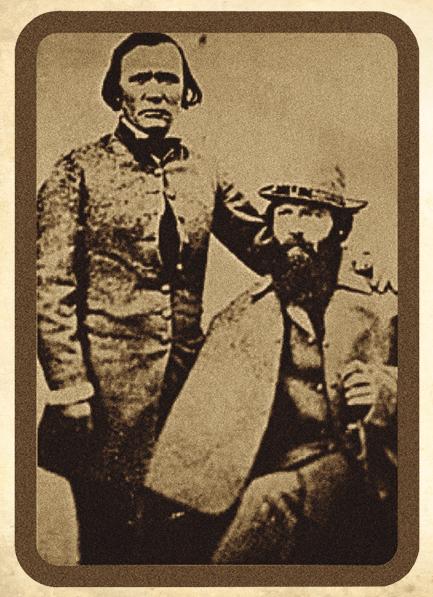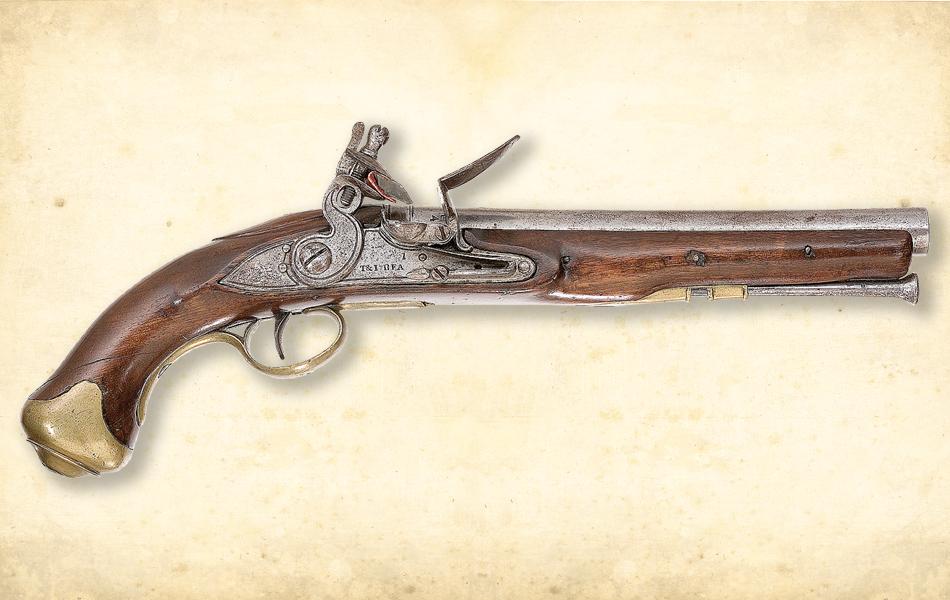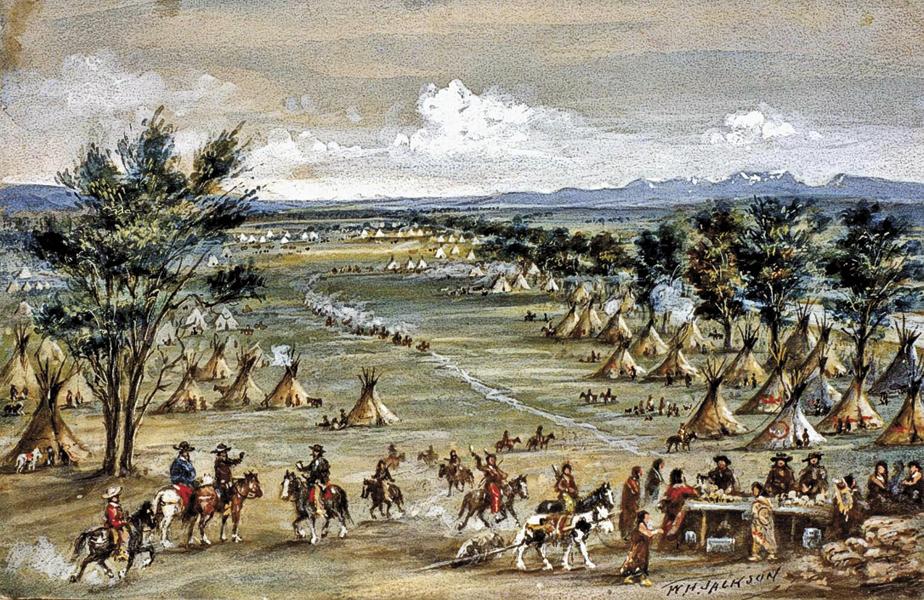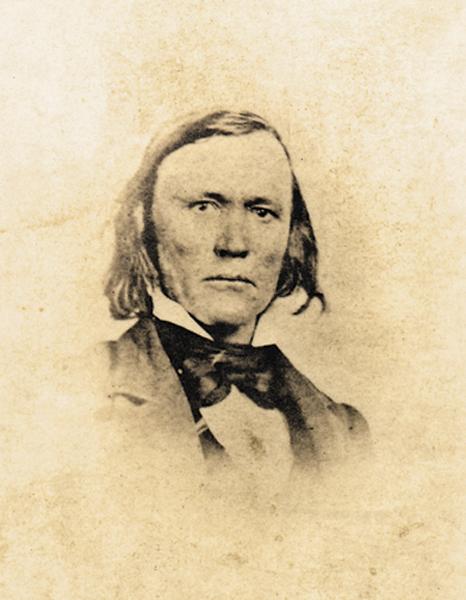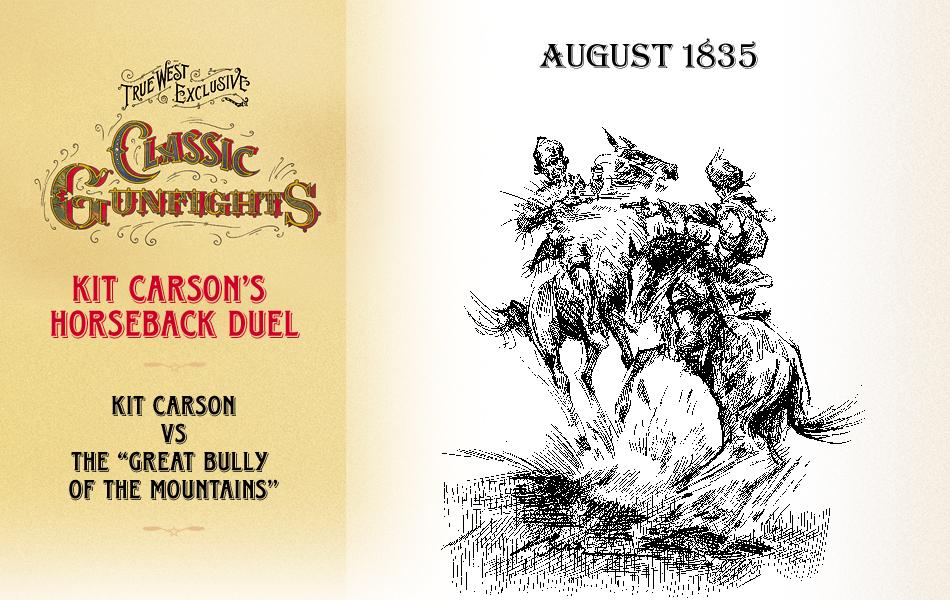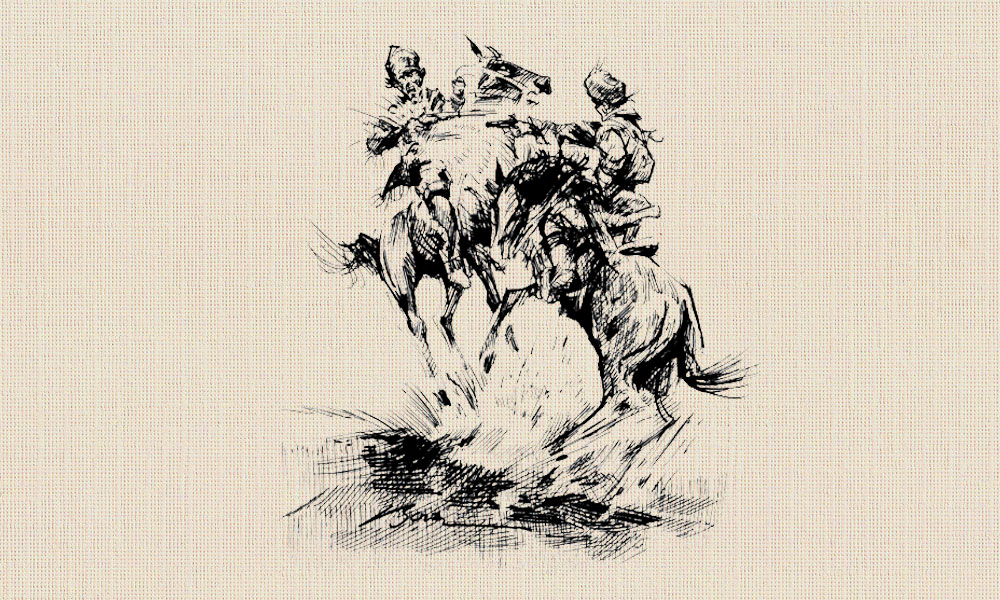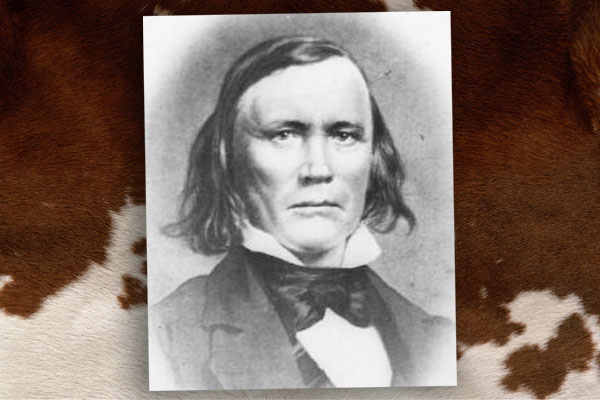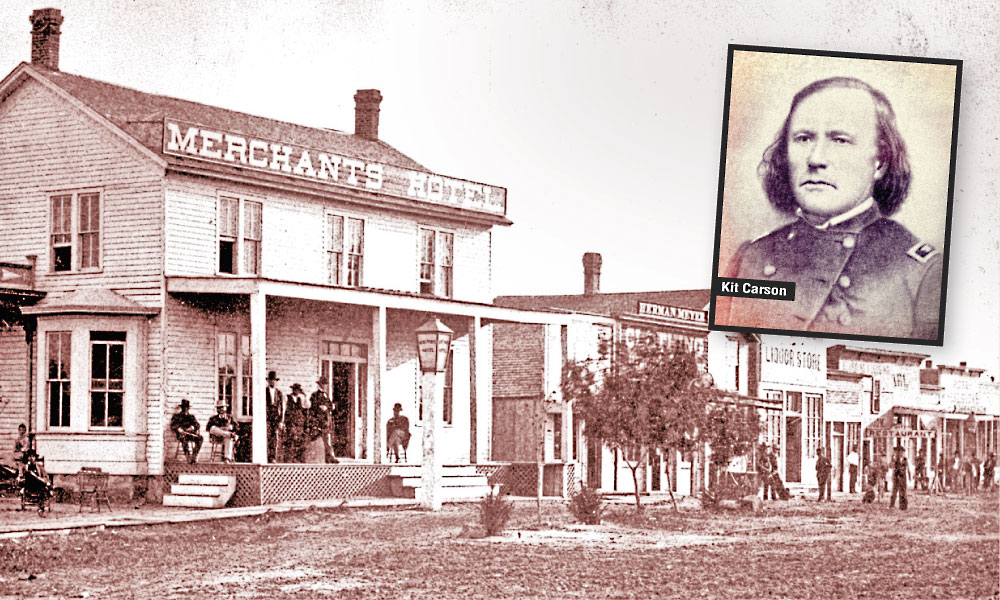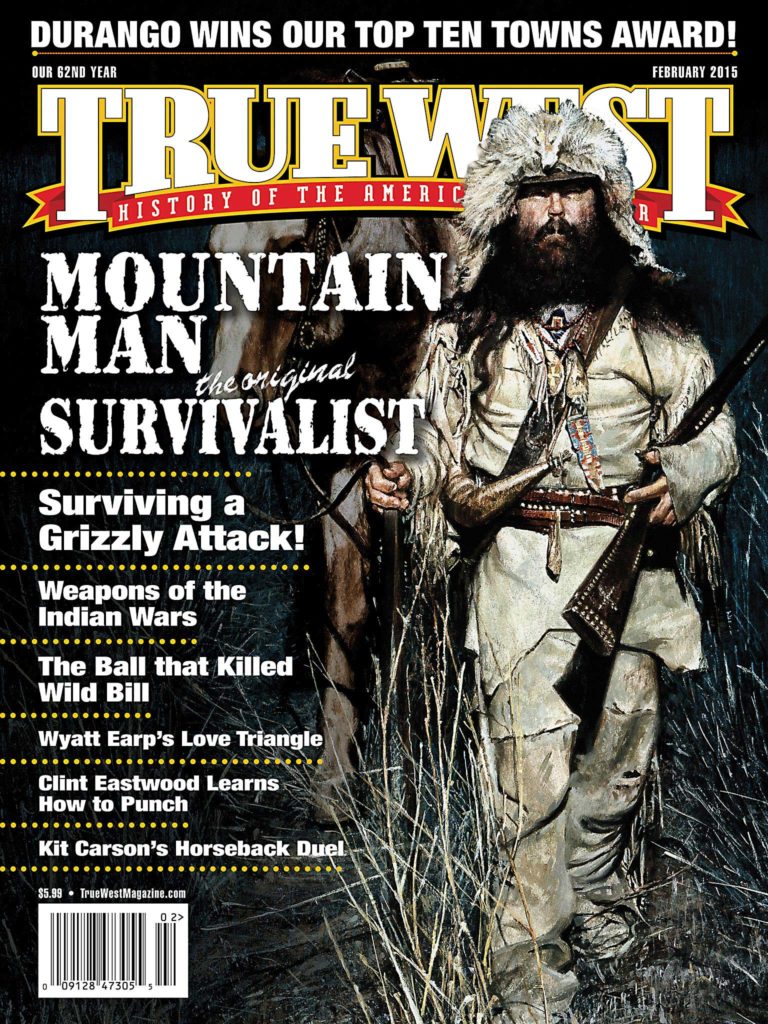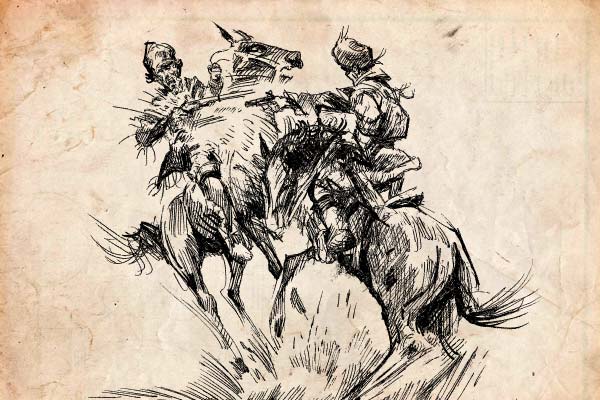 August 1835
August 1835
Chouinard, also known as the “Great Bully of the Mountains,” is abusing anyone and everyone he runs into in the sprawling camp. He picks fights and beats up two or three of his fellow Frenchmen.
Late in the afternoon, the bully turns his attention to the Americans, blaring that he will “take a switch and switch them” for being “mewling school boys.”
Finally, a short, wiry trapper steps forward, proudly proclaiming he is an American and unafraid of the Frenchman. The bantam rooster-like mountain man warns the Frenchman to stop such talk or he “will rip his guts.”
Chouinard turns on his heels and hurries to his lodge to retrieve his rifle and his horse. Kit Carson, the challenger, does the same.
Word spreads of the impending storm. Trappers and Indians hurry to watch the battle about to unfold inside the open circle in front of the tents.
Carson has armed himself with a horse pistol, possibly a single-shot dragoon. In the heat of the moment, he rides forward without a saddle.
The two horsemen approach from opposite directions. When they gallop toward each other, they rein in so close, their horses’ heads touch.
Carson demands to know if he is the man the Frenchman intends to shoot.
“No,” Chouinard replies, but in the same instant, he swings up his rifle to fire a shot.
Carson raises his heavy pistol and shoots a half-second before the Frenchman can pull the trigger.
Carson’s shot strikes Chouinard in the right hand, shattering it and tearing off his thumb. The ball comes out the wrist and passes through the arm above the elbow. Carson’s shot causes the Frenchman’s rifle to jerk upward; instead of hitting Carson in the heart, the bullet creases the trapper’s neck, under his right ear. The spent powder burns Carson’s eye and singes his hair.
Chouinard falls to the ground, and the duel ends.
Aftermath: Odds & Ends
After the fight, Kit Carson reportedly went back to his tent to retrieve another pistol so he could finish off the badly wounded Frenchman. Carson didn’t clear up whether or not this happened, adding only a single sentence about the duel, “During our stay in camp we had no more bother with this bully Frenchman.”
This sounds like the bully survived. “Historians and writers remain about evenly divided over whether he did or did not kill Joseph Chouinard,” writes Marc Simmons in Kit Carson & His Three Wives.
*****
After witnessing the collapse of the fur trade, Carson had a chance encounter with explorer John C. Fremont, in 1842, that allowed him to act as a guide and fighter before he joined the fight in the 1846-48 Mexican-American War. In 1849, he moved to Taos, New Mexico; five years later, he became an Ute Indian agent.
By 1861, he was back in battle, in this case, fighting for the Union in the Civil War. Carson joined the 1st New Mexico Volunteer Infantry where he served as its colonel. After clashing with Confederates at the 1862 Battle of Valverde, he defeated the Navajos and rounded them up for a forced march to the Fort Sumner reservation.
A year after being named a brigadier general in 1865, Carson moved to Colorado to serve as commander at Fort Garland. While there, he negotiated a peace treaty with the Utes.
*****
Carson left the Army in 1867 because of declining health. He died at Fort Lyon on May 23, 1868. His final words were, “Doctor, compadre, adios!”
Recommended: Kit Carson & His Three Wives: A Family History by Marc Simmons, published by University of New Mexico Press
Photo Gallery
In the gunfight, Carson relies on a horse pistol. While no one knows for certain the exact model pistol Carson uses, the time frame indicates it would have most likely been a flintlock, much like the above late 18th-century European horse pistol. Such handguns were commonly found in early America and easily put to use on the frontier years after their first appearance.
Kit Carson attends the annual trapper’s rendezvous with his old friend Jim Bridger. His crew has just finished a season of beaver hunting near the headwaters of the Missouri River. The river’s floodplain is well grassed with stands of cottonwood and willow, and the air is quite cool for summer. The 1835 rendezvous attracts a couple hundred white traders and trappers, while at least 2,000 Indians have pitched their tipis for miles up and down the river.
– All images True West archives unless otherwise noted –
– Illustration by Bob Boze Bell –


